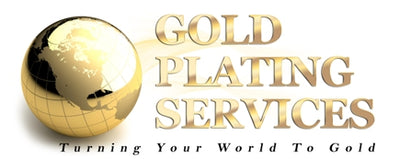Brilliant Rhodium Plating Bath
Brilliant Rhodium Plating Bath. Rhodium is a hard, white precious metal in the platinum family that is commonly used for plating onto jewelry or specialty technical applications*. Rhodium plate has a color similar to silver but, unlike silver, rhodium plate will never corrode under most normal conditions. With a density similar to lead, rhodium is hard, with a hardness about like chromium. Rhodium produces a deposit that is among the most chemically inert metals that are normally used for electroplating. Because of its hardness a normal decorative application is usually much thinner than gold. A normal decorative deposit of rhodium is usually 4-6 millionths of an inch, (0.1 – 0.15 microns).
- Requires a platinized Anode
- Operates at room temperature.
- Silver or copper alloys should have nickel under plate to prevent contamination of solution
- Make sure work is charged before immersion into the bath.
- Plate at 3-4 Volts for 1-3 minutes at room temperature for normal decorative thickness
*See cautionary notes below.
What you will need to use this solution properly:
Our Brilliant Rhodium Plating Bath is an electroplating bath that requires the proper equipment and supplies to be used. We recommend electroplating equipment such as our "Jewel Master Option 3" which will have everything you need for most applications including the following minimum required items.
Minimum Required Items: Not including any surface preparation, cleaning, activation, or rinsing requirements.
1. A source of direct current voltage with a controllable voltage range of one to six volts, (1 VDC - 6 VDC), with current capacity of at least one half, (1/2), ampere per square inch of plated area.
2. A suitable container to hold the solution.
3. A solution electrode or anode made of the proper material, (Platinum Anode Required), to apply the positive electrical charge to the solution.
4. A common lead or ground clip that will provide electrical connectivity from the negative, (-) terminal of the power source and the item being plated.
5. A plating rack to hold the parts in the solution and provide electrical contact with the negative terminal of the power source.
*An important note of caution regarding plating with Rhodium:
Plating with rhodium is a specialty craft and somewhat risky undertaking. This is because rhodium plating is very sensitive to surface conditions, activation, and contamination of the solution. Problems in adhesion, cloudiness or uniformity can occur especially when learning the specifics of plating onto a new material or surface. One risk of plating with rhodium is that if a problem with the plating occurs it can be extremely or sometimes impossible to repair. Most metal plating such as gold, nickel, or copper can easily be polished off or chemically stripped from the substrate if a there are problems with the plated deposit. This is not the case with rhodium. Rhodium is so hard that it cannot be polished off most substrates without damaging the underlying material. Furthermore, it is generally considered impossible to chemically strip rhodium without damaging or destroying the underlying material.
Our Recommendation: If you want to plate with rhodium you should “practice” on items of little or no value that are very similar to what you want to rhodium plate. Only when you have successfully and consistently plated onto your practice pieces should you move onto plating your intended or valuable item with rhodium. Under no circumstances you should not practice on any item that you’re not willing to throw away if it is damaged. In the rhodium plating community there are many stories about someone who’s first attempt at plating with rhodium was on some priceless heirloom or valuable jewelry only to have the piece essentially destroyed by a peeling or mottled rhodium plate. Don’t join these ranks, it is extremely discouraging and may be expensive. If you have any questions about rhodium plating contact our technical support department for information or advice.
